Staff Sgt. Michael Schlitz grimaces in pain as Spc. Steven Neveau, a burn-therapy assistant, rotates the burned Soldier's arm to keep scar tissue from freezing his already limited movement.
"No pain, no gain," Schlitz said through gritted teeth, as he asked Neveau to ease up a bit. In need of a corneal implant, Schlitz's eyes are covered with shades, and he sucks on a "pain pop" packed with a strong medication to take the edge off his pain. His face is heavily scarred from his encounter with a roadside bomb in Iraq.
Schlitz is no stranger to pain; he's been recuperating for more than a year at the Institute of Surgical Research Burn Center, a sprawling facility on the fourth floor of Brooke Army Medical Center at Fort Sam Houston, Texas. The 40-bed burn center, the only one of its kind in the Department of Defense, comprises two intensive care units and a care center for patients no longer needing round-the-clock intensive care.
An outpatient since December, Schlitz has come a long way since his injury. An infantryman, he was attached to an engineer detachment in Iraq. He was on patrol in February 2007 with a mission to clear roads of improvised explosive devices. When the vehicle in which he was riding triggered an IED, Schlitz was splattered with propane and thrown from the vehicle. He ran toward the vehicle to help the crew then saw the flames shooting up from his body. He lay there on fire, muscles paralyzed and unable to roll over.
His comrades put the flames out with an extinguisher.
"I was conscious and knew my guys were concerned for me. I remember reassuring them that I'd be fine," Schlitz said. "I couldn't see how bad my injuries were, but I could see that the fingers on my right hand were melted to my glove."
Eighty-five percent of Schlitz's body was burned, and he later lost the fingers of his left hand and his entire right hand.
Like other combat casualties with moderate to severe burn injuries, Schlitz was flown to the burn center for treatment.
With resources focused in one facility, health-care professionals are able to care for patients as they conduct research to improve future patients' chances for survival, BAMC officials said.
Burn injuries comprise about five to 10 percent of all war casualties, said trauma surgeon Dr. (Lt. Col.) Evan Renz.
"This is the only place in the military where doctors can provide cutting-edge, critical care for burn patients," Renz said. "We hope the lessons learned from this war and the advances in care will help people throughout the world."
A survivor, Schlitz continues to battle toward recovery at the burn center, with 30 surgeries already under his belt and many more slated to reconstruct his face and body.
Schlitz is a frequent visitor to the center, and one of dozens of outpatients. Twenty-six other inpatients currently occupy the 40-bed center, which is often near capacity. Since Operation Iraqi Freedom began in 2003, more than 700 casualties have been treated at the burn center, Renz said.
"These burn patients didn't quit under enemy fire, and they're not quitting now as they struggle to survive," said Renz.
The center treats civilian burn victims as well as servicemembers with combat-related injuries, since it's the only regional burn-specialty resource in Southwest Texas. The next closest is in Dallas. The burn center is a one-stop shop for burn patients, offering just about every sub-specialty in-house, including surgeons, nurses, burn therapists, behavioral-health providers and respiratory therapists.
Renz's colleagues said he's at the hospital around the clock, overseeing seven active-duty surgeons and several Reserve surgeons who operate on burn patients and others. It's their job to meticulously piece back together Soldiers suffering from devastating injuries, such as those from blasts that have melted away or charred their skin and robbed them of their limbs.
"I can't imagine anything worse than the severity of burn injuries," said Capt. Kristine Broger, a staff nurse in the burn center ICU.
She's all too familiar with the impact of such injuries. With a survival rate at well over 90 percent for Iraq-war victims, thanks to technology combined with quick-acting comrades in the field, Broger has treated patients with burns that have left only two or three percent of their skin unscathed.
"Their injuries are with them for the rest of their lives," she said.
"If someone has a significant burn, which covers 20 percent of the body, you can now see the effects on the heart, lungs, liver and nervous system," added Renz. The patient can't control his body temperature or stem the loss of water from the body. And he suffers great risk of infection.
After removing the damaged skin, surgeons replace it with grafted skin from the remaining healthy areas of the patient's body.
"If a patient comes in with 97 percent total body surface burns, we may have to obtain skin from the top of the patient's head or the soles of his feet," Renz said.
After the graft, the body fights to heal, struggling to close the wounds, while burn therapists fight to keep the wound margin as large as possible so the grafted skin can take hold.
"When the body creates scar tissue to heal, it's rigid and unforgiving," said Capt. Chuck Quick, chief of burn rehabilitation. "A burn therapist's primary objective is to ensure the burn victim retains functional range of motion."
Studies show that, to be effective, the injured area must be "stressed" about six hours a day, Quick said. He and his team of burn therapists use a combination of occupational and physical therapy techniques to do so, including splinting, positioning devices, range-of-motion exercises and movement activities. The burn center's equipment is cutting edge, Quick said, and many pieces have been custom-designed by burn therapists in hopes of improving the healing process.
"We're very aggressive here," Quick said. "There are very few times that a patient doesn't get out of bed on day one or two. The quicker patients get up and moving, the more likely they are to recover more quickly and survive."
Recovery can take months or even years; many burn center patients continue to come for outpatient burn therapy long after they first check out of the hospital. A mix of in- and outpatient Soldiers, along with caregivers and therapists, is commonly seen at the burn therapy room. Some patients exercise on mats, some on treadmills and others at therapy tables. All have a therapist manipulating limbs or monitoring treatment.
For the newcomer, the room feels uncomfortably hot; it's kept at 80-plus degrees to keep the burn patients warm, Quick said.
Capt. Jabari White leaned on a therapy table as burn therapist Alicia White flexed his arm. White, an outpatient, is receiving post-surgical rehabilitation. He suffered burns over 60 percent of his body when a bomb hit the patrol vehicle in which he was riding.
Like many burn patients, White wanted to stay in the Army, despite a severe injury. He returned to active duty in August and is serving as a military intelligence officer.
"I've received a lot of support from my unit; that's been the driving force for my recovery," said White, who also praised the burn center's care. "It's a great facility."
Across the room, Schlitz laid on a therapy mat, working to flex his arm. He too wants to get back into the fight but is limited by the loss of his hands. His frustration doesn't involve the pain of recovery, but the lack of independence.
"If I wasn't a double amputee I could do a lot more," said Schlitz, whose mother quit her job and moved to San Antonio to take care of her son. "I can't shower or clothe myself. It's hard not being able to do what you want to do."
Despite the pain and frustration, Schlitz isn't bitter. "I wouldn't change anything," he said. "If it wasn't me, it would have been someone else."
The courage and pride of the Soldiers is what many burn center health-care professionals said drives them to overcome the stress and emotional strain of a difficult job, where what's done daily can mean the difference between life and death.
"It's a privilege and an honor to do what we do here, and it's a privilege to serve beside Soldiers in Iraq," said Renz, who said there is always a member of the burn center staff deployed downrange at any given time.
Quick said he gets great satisfaction from seeing former patients who have returned to mainstream life, when he sees them out and about on post or in the local community.
"We caused them pain every day," Quick said, referring to burn therapy. "But I'll run into them in the store and they smile and tell me, 'I couldn't stand you.'" But then they give Quick a big hug.
Staff Sgt. Bradley Gruetzner was injured in November 2006 when a roadside bomb blasted his patrol vehicle. He was burned over 15 percent of his body, broke 15 bones and had a hand amputated.
"They blew me up, but they didn't win," said Gruetzner, who was preparing for surgery. "They didn't win because I'm alive."
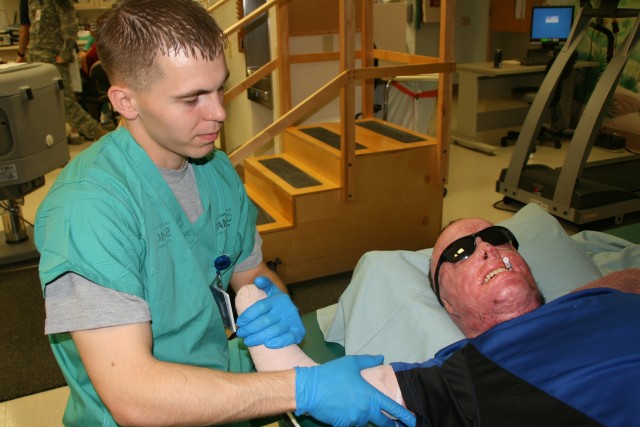
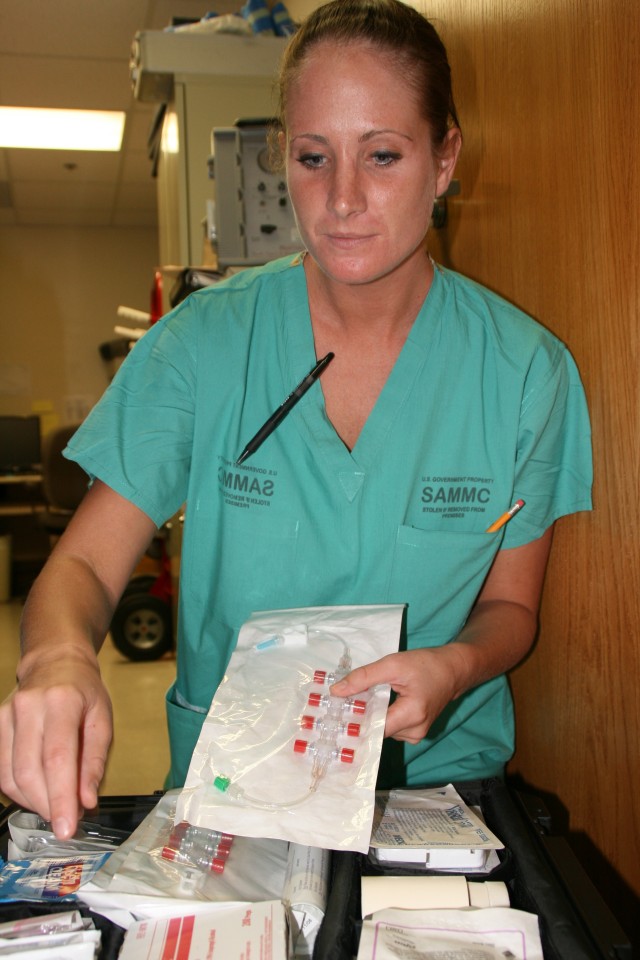
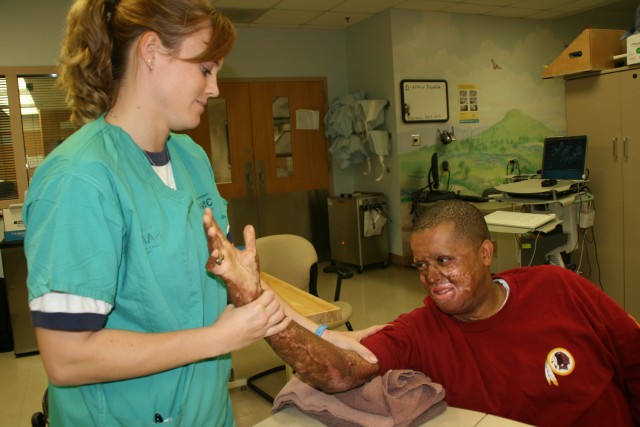
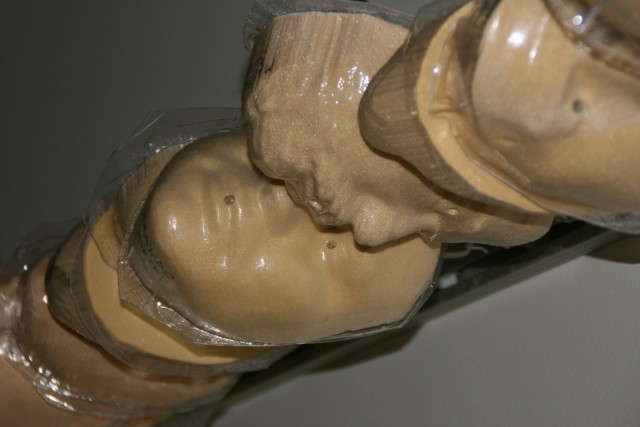
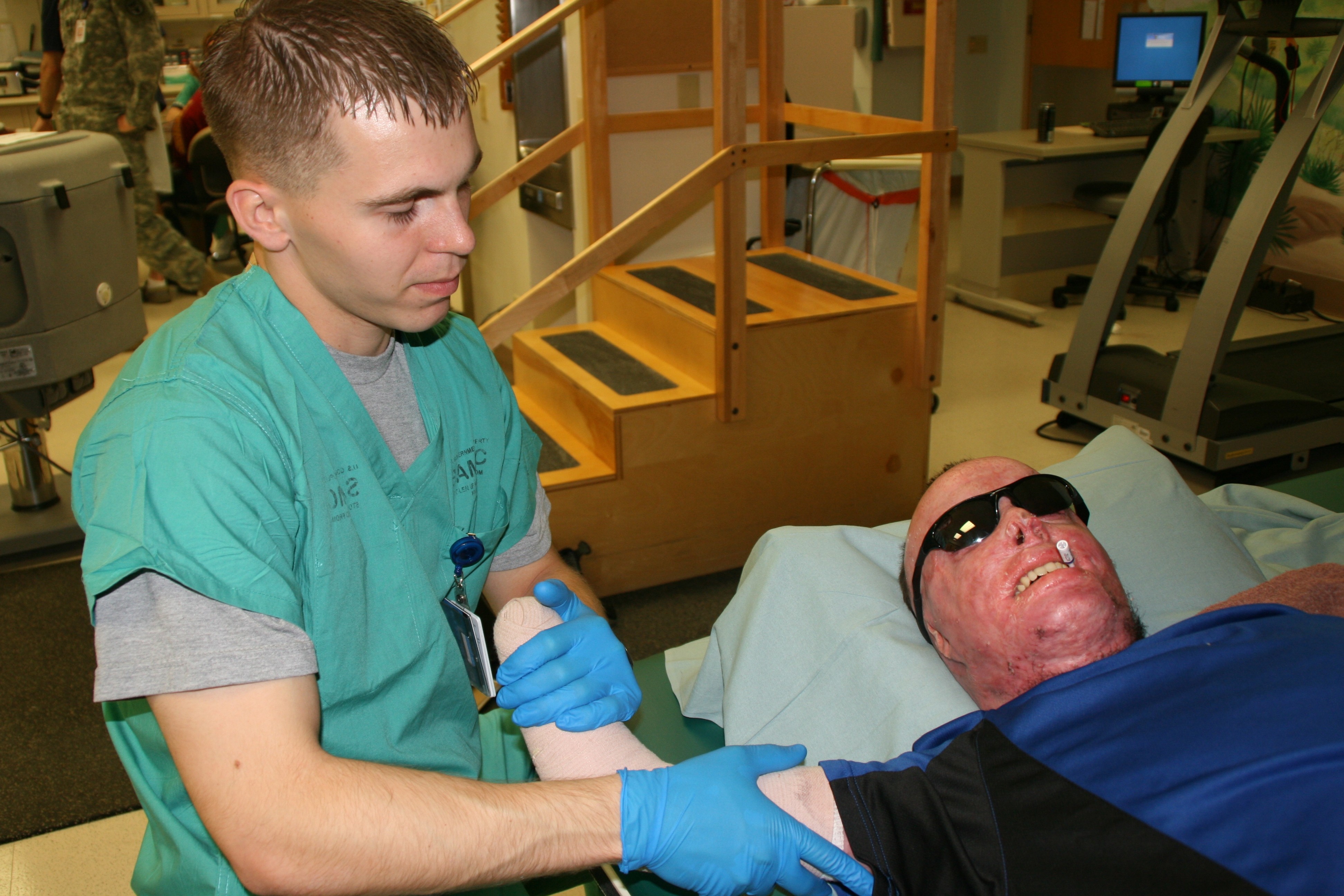

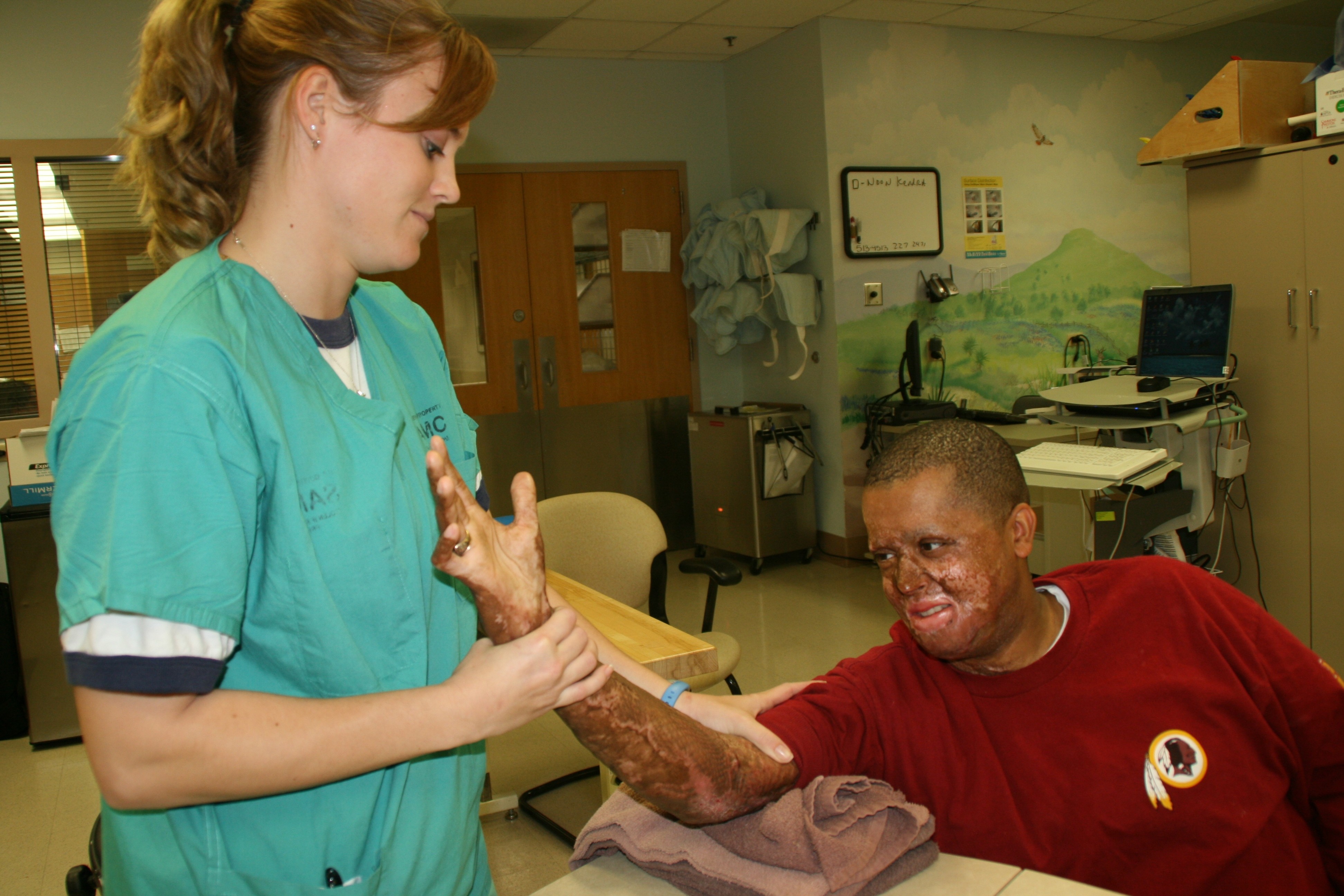
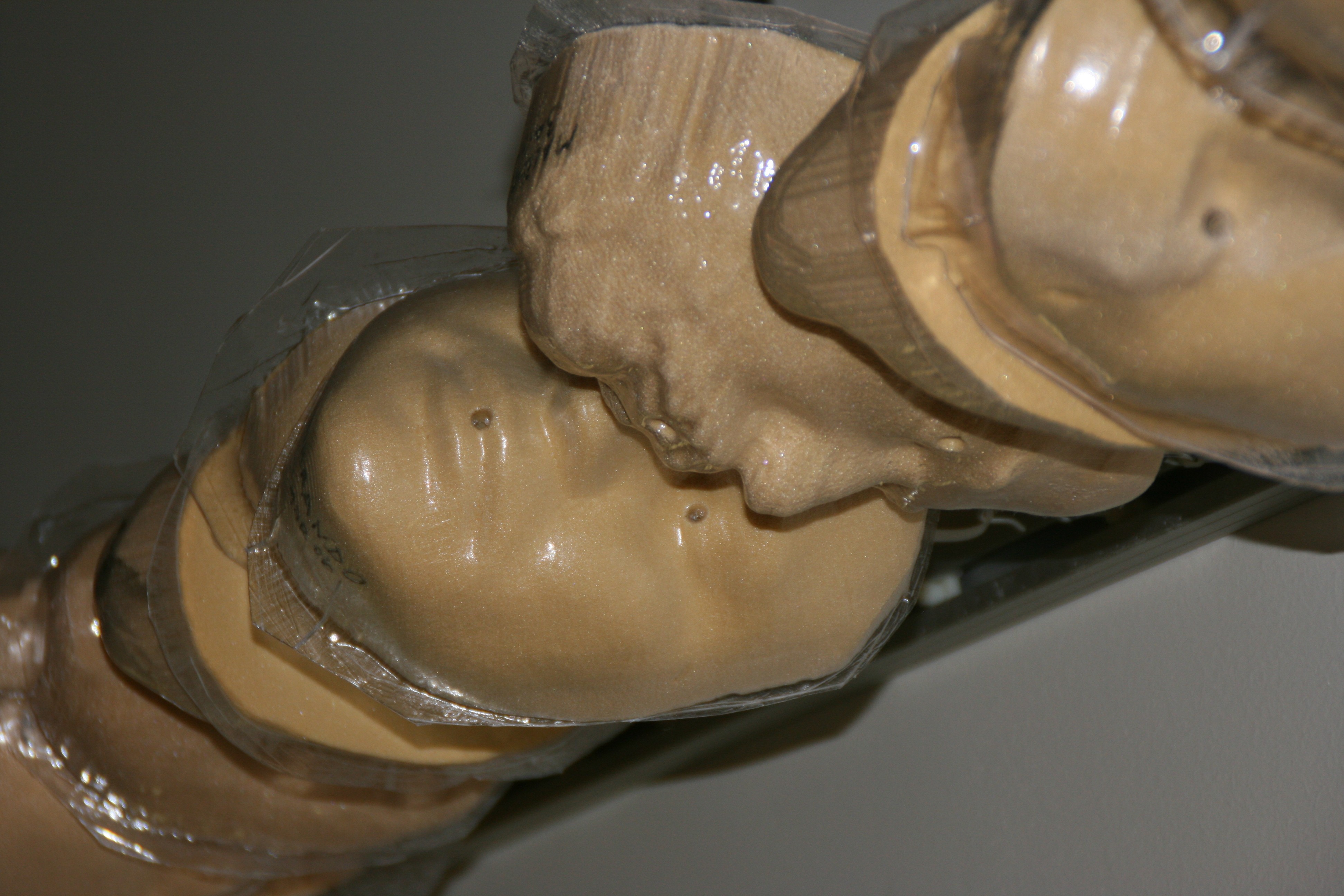
Social Sharing